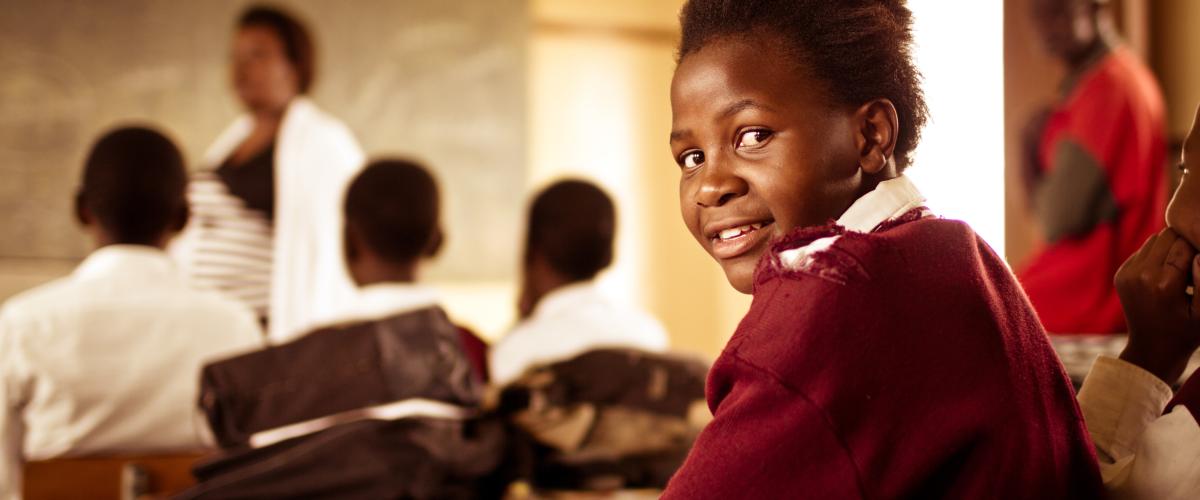Kananga, the capital city of the Kasaï-Central Province in the Democratic Republic of Congo (DRC), is a bustling commercial center that is home to roughly 1.5 million people. Yet even as the city is poised to become an engine of growth for the whole country, Kananga, as do many other urban areas in the DRC, must wrestle with an array of environmental challenges.
One of the most serious of these challenges by far is soil erosion. Local soils in Kananga, which are already naturally prone to erosion because of their sandy composition, have become even more exposed due to a range of factors including inadequate urban agriculture practices, widespread deforestation, changes in land use and land cover, inadequate construction regulation, and poor drainage. Climate change, and the more intense rainfall that brings, will likely accelerate the pace of erosion even further.
Determined to safeguard lives, livelihoods, and critical infrastructure in Kananga from the threat of soil erosion, the government of the DRC, led by the Ministry of Finance and the Ministry of Urban Planning and Housing, has begun to tackle this problem with the support of GFDRR and under the auspices of the World Bank’s Kananga Emergency Urban Resilience Project.
The team has recently completed a comprehensive assessment of soil erosion in Kananga. This assessment has already begun to inform the DRC government’s design and implementation not only of more immediate erosion containment measures, but also of a longer-term strategy to combat the underlying causes. Both the containment measures and the strategy will be supported by the World Bank–financed project.
A key focus for the assessment was the identification and analysis of areas in Kananga that face the greatest risk from soil erosion and that should therefore be prioritized by the DRC government. The assessment, for instance, revealed which segments of National Road 1—a major highway that connects Kananga with the rest of the country as well as with the railway and the airport—are most vulnerable to soil erosion.
Moreover, the assessment also helped identify which interventions should be prioritized by the government in both its immediate measures and its longer-term strategy. The assessment ultimately found that the following interventions should be among those that are the government’s top priority: stabilizing slopes; managing runoff and improvements to drainage, including with nature-based solutions; monitoring the situation including erosion risks and flooding; designing early warning systems; implementing awareness campaigns; and strengthening community-response capacities. The community engagement will support changed land use practices and minimize the negative impact of movement around the gully erosion sites.
In reaching these findings, the assessment relied on a range of methods including historical data collection; satellite-based assessment of urban growth, vegetation cover, and land management; the use of drones to analyze slope stability; and the modeling of flows in ravines.
At every stage of its implementation, the assessment engaged with a wide range of stakeholders. The national and provincial branch of the Urban Roads Agency provided technical inputs; the provincial and local government authorities helped organize community consultations and provided inputs for prioritizing study areas; and local communities were not only involved in the historical data collection, but they also shared locally developed solutions to combat erosion. Such solutions include planting strategies either to cover the ground with grass, thus preventing further surface erosion while rebuilding the topsoil, or to stabilize the slopes.
The assessment was recently presented to the Ministry of Finance, the Ministry of Urban Planning and Housing, and the Urban Roads Agency in addition to provincial and local authorities as well as community representatives. It is anticipated that the immediate focus for the DRC authorities will be the stabilization of priority sites as identified in the assessment, an effort that will be supported by the World Bank’s Kananga Emergency Urban Resilience Project. This project is among the first in the World Bank’s global portfolio to focus squarely on the problem of soil erosion, and it does so in a way that takes an integrated and multisectoral approach.
GFDRR support for tackling soil erosion in the DRC is only one of a broader suite of efforts by the facility to advance the country’s resilience to disaster and climate change. To cite just one example, the facility has been supporting the capital city of Kinshasa in using Earth observation (EO) data and services to strengthen its disaster risk management and urban resilience practices.

View more results stories from fiscal year 2023 in GFDRR's Annual Report 2023.
